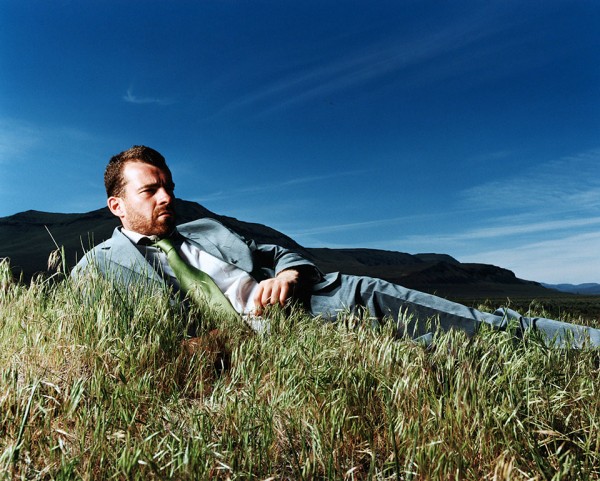From “Beauty” to Bland… and Back Again
Keywords: Archived, Beauty, Cheesecake, Dated 35mm Photography, Everyday Objects, Graphic-Design Industry, History of Stock, Image Transmission, Irony, Low-end Advert, Magritte, Photo Company, Photo Researcher, picture-files, reality, Relevance, Rolf Sjogren, Sledgehammer, Stock Imagery, stock photography, Surreal, The Image Bank, Unreal
A personal history of stock photography
When I first started working at a stock photo company, as a photo researcher, no one I ever told what I did for a living had any idea what I was talking about. If you were a lawyer, an actor/waiter, a baker, an adjunct instructor at N.Y.U., a dog-walker, what-have-you, everyone anyone could easily imagine your professional life. But I said, “I’m a photo researcher at a stock photography company” and always got a look that appeared to say I’m waiting for you to say something that makes any sense to me. Polite and patient people would ask me to explain the job of a photo researcher, and then if they had the patience of a saint, they’d ask: What is a stock photography company? But most people would usually pretend to hear that I was a photographer for a magazine and said that they knew someone who worked at a magazine and Are the deadlines super intense? and Does the New Yorker have photographers on staff or do they only hire freelancers? I preferred it when people didn’t try to understand, because the explanations were exhausting. If you’re perplexed why I was talking about my profession to people who weren’t in my profession, please understand: people actually did that in those days. New Yorkers went out to bars to meet their neighborhood friends, and occasional strangers, and would actually try to have conversations about something other than the universe within a two-yard radius from one’s brain, or contemplating Facebook vs. Twitter vs. LinkedIn and Lady Gaga vs. Rihanna. There were even times when we did not talk about real estate.

“70s girl in the old American car,” by Gregor Hočevar
Almost my whole career has been in stock photography but never as a photographer. My first job was as a photo researcher at The Image Bank, where I’ll never forget all the weird picture-files full of beautiful women wearing tons of 1970s-era makeup and enormous sunglasses. Image Bank was a slick company (the logo was chrome) with offices on lower 5th Avenue, owned by a 1970s version of Mark Twain, who always wore 3-piece navy, pin-striped suits, and who actually laid eyes on his $15,000/year workers maybe twice a year. The eponymous bank of images was floor-to-ceiling metal filing cabinets on wheels, in tracks, filled with hundreds Pendaflex folders stuffed with thousands of plastic sheets each holding twenty 35mm slides of every subject photographers ever took pictures of. Commercial photography then (as now) was a hetero-male dominated field and it was no accident the files overflowed with photos of gorgeous women. So the fattest of these overstuffed files was the category for “Young Women Portraits”—a file that had never been purged in 15 years, only continuously added to. There was a section called “Cheesecake,” which filled about 7 bursting Pendaflex folders (dwarfing the oddly slender “Beefcake” folder next to it). A colleague of mine once said about a photographer she worked with: “he likes to jerk off with his camera.” The head/shoulders portraits, back-lit and soft-focused, were captioned simply “Beauty,” like it was a proper noun, sometimes with details like: “Beauty drying off with towel,” “Beauty splashing face,” “Beauty looking through binoculars,” “Beauty reclining on moss embankment”, and so on. Being 10+ years old, these images of transplendently made-up women in gigantic sunglasses were a window into a surprisingly recent past that now seemed obliterated from cultural memory.
When I wasn’t “researching” photos for low-end advertising brochures (Image Bank’s bread-and-butter clients), I was spending several nights a week in search of dancing at nightclubs, because my newly-adult life meant, above all else, freedom, and freedom meant choosing to live in the most exciting city in the world, and what made it exciting was, primarily, dancing at nightclubs until 2 or 3 AM on a work-night. (And, as this is no longer even on the radar of nightlife here; now this city is barely exciting at all, much less the most exciting in the world.) Eventually I discovered The Pyramid on Avenue A, specifically the Sunday night show then, which was called “Whispers.” There I was educated on what clearly was the most important performance art category in the universe—the ironic drag queen. One day, something clicked in my head: These drag queens had almost the very same faces in the Beauty files at Image Bank. Instantly, those hackneyed, dated images became anthropological jewels in my mind (and only my mind). To this day, I wish I had published a massive coffee-table book full of all those of Image Bank Beauties, called something like Living the Dream. If I’d been armed with a scanner and an iPhoto account then, I would have, but those 35mm slides are long gone. By 1992, the stock photo business had been growing gradually for decades, but was now grabbing a piece of the advertising market. A few of the bigger stock photo agencies began to re-make their libraries, tossing out their drawers full of random magazine-story outtakes in favor of random low-end advertising outtakes and over-literal conceptual shots. Mountains of dated 35mm slides, were tossed out. Cheesecake was replaced by images of fierce yuppie women in pinstripe skirt-suits crashing through the “glass ceiling” in boardrooms shaking hands with sensitive men in power-neckties. No more Beauties.

“Businesswoman with sledgehammer below businessmen on platform,” by Charly Franklin
These new moneymaking images were crafted by a handful of savvy photographers, not too precious about their craft, who noticed their stock photo royalties rising (not so, their assignment fees) and decided to do something revolutionary: “shoot for stock.” They’d spend their own money regularly producing set-up shoots, and they discovered the motor-drive and auto-bracketing exposures. In one hour of shooting, one situation would yield 20 rolls of shot film—many hundreds of individual frames, a handful of which would be selected for the library by photo editors. A couple of the smartest stock agencies sent their photo editors on some of these shoots, to make sure photographers stayed on target. The best of these was the Tony Stone agency, and their on-site photo editors were actually called art directors. That titled implied entrée into the rarified world of our clients, the advertising agencies, where “real art directors” dreamt up branding ideas and campaigns and spent boatloads of money on shoots. There was, however, almost a routine career path at the dozens of “stock houses” in New York: you started out at the reception desk, and if you had half a brain you became a photo researcher in a few months. After a year or two of that, you could start applying to stock photo editing jobs, which cropped up frequently because there were dozens of stock agencies of all stripes. (By 2008, however, there were only a few very large stock agencies left because investment bankers had taken over to perform that corporate hat-trick: the “industry roll-up.”) After that, if you weren’t bored out of your mind with cookie-cutter images and were really good at advising photographers, Art Director was next. Or, if you were bored, it was time to try and switch into the publishing world, where “real photo editors” worked—choosing images and assigning photographers on shoot stories.
In reality, I don’t know of a single stock photo art director who ever went on to work in the advertising business. This was partly due to a deep prejudice at ad agencies against the entire phenomenon of stock photography. Stock photos were perceived as crummy, cookie-cutter quality and, worse, “taking away assignments” (because clients would be able to license an existing image for $1,000 finstead of spending $10,000 to produce the shoot themselves). But that part was a myth, because if a client could afford a shoot—and all the customization it enabled—they would do it. The cheap availability of stock just made photography in general more affordable and useful. But amongst ad agency creatives, stock photography was perceived as an enemy and of inferior quality. (And a career working in stock may have disqualified anyone from working in advertising.)
The derision was often well-deserved. In the 1990s, the term “stocky” was coined, to refer to these cookie-cutter images—bland models engaged in bland, stagey situations, with very fake looking facial expressions, too much makeup, and dull clothing. Stock photo editors encouraged this, telling photographers to avoid distinctive clothing and, generally, to sanitize the look of shoots, appealing to the broadest possible market. It was all about finding the lowest common denominator—which is never a way to improve quality, only quantity.
Meanwhile, more and more photographers started working in stock, shooting on spec, with art directors and stylists. At the peak, some of these guys made literally over a million dollars a year from stock royalties shooting cookie-cutter models relaxing on their backyard patio, sipping soft drinks—and any of the other thousands of requested situations, shot in a way we called “stocktastic.” It was almost a dirty little secret in the business: just about anyone who knew the bare basics of using a professional camera could produce these shoots, and they would almost always make tons of money. It was almost a dull science: invest $5,000 a month in these shoots, and make back $25,000 within a year for each shoot, and the shoots would keep on making that for 3 to 5 years. Over its lifetime, an average shoot would yield ten times or more than was invested in it. In the 1990s and early 2000s, you could almost do no wrong (financially) shooting for stock.
It couldn’t last. In the early 2000s, two seemingly contradictory trends emerged and were driving the business, but only one would emerge victorious. First, a revolution began in how images were sold. Heretofore, images were sold only for or a specific usage, for a specific time frame – the fee based on how widely distributed product was or how large a publication’s circulation. You could use an image the size of postage stamp, inside a small magazine, for maybe $150. Or, if you used the image for a global ad campaign and embargoed anyone else from using it, that would run you up to $50,000 for a year or two of use. The photographer would get 30–50% of the fee. This whole paradigm became known as “Rights Managed” (RM) licensing, in contrast to the invention of “Royalty Free” (RF) licensing, in the late 1990s. RF allows customers to use an image for whatever they want, nearly forever, for a fixed fee. At most you’d pay about $500, usually more like $250. RF was invented by those investors who came in to “roll up” the industry (and their motor-drive-photographer lapdogs), not creative photographers, so naturally the photographers’ split was chopped, to 20%. The theory was, images would be purchased so much more often, photographers would end up making more money if they played along. Because of the lower split, the fixed pricing and because RF didn’t record usage history, many photographers and photo editors were scared to death of it—a fear that was masked by disdain for RF’s amplified cookie-cutter, bland look. But the one-price-fits-all images, we were told, would never be the more creative, highly-produced or “signature-look” images of RM, and there would always be customers who wanted to know images’ usage history or wanted exclusive rights, so RM “would never go away.” But that was spin to calm down photographers and get them to join in the RF game. No one knew for certain whether RM would survive the RF explosion. Little did we know, RF was only a hint of the nightmare yet to come.
The other, contradictory, trend, starting with Tony Stone’s art-directed shoots and ending with Getty Images’ adaptation of that into the “Stone+” collection, ten years later, was to craft ever-more-unique and high-end images for stock, so that agency art buyers would simply lose their prejudice against stock and find images every bit as good as assignment. Hot, up-and-coming photographers were actually paid high day-rates, in advance, by stock agencies to make stock images. Photographers were lured by shoots which had no product in them, and directed to stay true to their signature look—no dumbing-down for a dumb middle-American client. A current in the fine art world also began to influence: non-produced, no-pretense imagery like Nan Goldin’s was serving up an antidote to the slickness of the Gregory Crewdsons of the art-world, and this was transmorphed into the look of authenticity in stock photography. Real people doing real things but somehow framed aspirationally. Embracing both the super-slick and the super-real powered a differentiation of imagery available in stock, and attracted ad agency art-buyers. Art directing those shoots was the best job I ever had, and probably ever will: Within a span of five years, I traveled to Brazil, Argentina, Chile, Costa Rica, Mexico, Ireland, Italy, India, Japan, China, New Zealand, Iceland, and all over the U.S., directing fantastic photographers on shoots of fabulous young people on eco-vacations in a tropical rainforest, or fierce, power-suited executives cutting deals on wind-swept mountaintops.

“Businessman lying on grass, Steens Mountains, Oregon, USA,” by Matthias Clamer
Even though all these shoots turned some profit and all of them were great for “the shop window” that attracted customers just by the level of creativity, the finance-geniuses at corporate eventually realized something brutal: these fabulous shoots weren’t nearly as profitable as ones which cost nothing at all. To attract a different kind of corporate customer—shareholders and private equity firms—the profit margin had to constantly improve, and an axe fell on the army of stock companies’ photo editors and art directors and “creative researchers.” Globally, at the peak in about 2006, there were probably 250 creatives (art directors, photo editors, and “creative researchers”—people who figured out what topics we should shoot) working with maybe 1,000 photographers (averaging over $100K+ a year from stock photo royalties alone) at a dozen or so stock agencies, globally. By late 2009, there were probably 10 creatives, and only a handful of photographers still making enough from stock to justify the time and investment. What happened? The Great Recession, but much more importantly: microstock and “crowdsourcing.”
Microstock started with graphic-design industry folks realizing they were sitting on literally thousands of easy-to-produce studio-shots of everyday objects and people in hackneyed situations, which other graphic designers might want to use and would pay a few bucks for the privilege. So they started websites where other graphic designers could post and re-use their images, which were created by company employees on company-owned digital cameras, not by freelance photographers. Image-suppliers were given “credits” when their images were downloaded, to be spent when those same graphics folks needed images for their design projects. This was literally royalty-free; usages weren’t tracked, and a supplier would only get paid if they ran up a surplus of hundreds of credits (worth $200 or so). Microstock was a splinter of the industry, but it grew exponentially as transmitting images online became easier and faster with broadband.
The timing was uncanny: just as the financial industry was laying the seeds for the Great Recession by commoditizing things like mortgages, the bankers now running the few remaining stock mega-agencies discovered that microstock could create the perfect storm for channeling a much bigger share of the stock photo cash-flow toward these bankers. Microstock takes the RF business model and says, if you have a commodity selling for $250, just make 100 times more of it and charge $2.50 and you’ve actually made 10 times as much (for the owners). And that’s literally what happened. Images that had cost $250 to use for anything suddenly only cost $2.50, and the photographer’s split went from 20% down to 5%. The creatives and photographers, who created the industry, and whose success lured the bankers to this altar of commerce, were left jobless or got literally pennies in royalties, which before had been thousands of dollars. Images were no longer created by bona fide individual photographers, but instead by image-making factories, run by small-scale venture capitalists. And images also flowed in from crowdsourcing—a mutant commerce-appendage of social-media.
The explosion of easy-to-use digital cameras made the techniques of basic photography, accessible to literally millions of people (and, let’s face it, most of stock photography looked pretty basic). Photo social media websites cropped up to service these amateur snap-shooters’ image-storage and sharing needs. One of these got rolled up into a big internet company, which then partnered with a big stock photo company, delivering to it (crowdsourcing) millions of these no-cost images for sifting through. Some of these images achieved that differentiated look almost the same way an army of monkeys at typewriters might eventually write the Magna Carta. At the same time, the biggest microstock company refashioned itself as accessible to photo-hobbyists and became a photo-social-media site in its own right, adding millions more images to the pile, begging for someone to find the gems of differentiated images amongst millions of random family snapshots and amateur travelogues.

“Mother kissing daughter (4-6), close-up,” by Jim Bastardo
That brings us up to about a year or two ago, when cameras themselves started becoming obsolete, in favor of camera-phones with high resolution chips. Now big agencies and little start-ups are trying to double-down on the game—attempting to tap into the spontaneous daily creation of millions of images by about a billion people.
Trouble is, somebody has to find and review those million new pictures and say, that one, and that one, and that one over there, are worth showing to MegaPharmCo for possible use in their ad for the latest cure of the latest disease. Ad agencies are now making art directors do their own photo research, but there’s only so many hours in the day, and so the mundane task of photo editing—which used to be choosing the best images from a shoot which cost thousands of dollars to produce—is now an almost epic task of curation: choosing which handful of these millions of images popping up in the internet cloud are worthy of a stock photo agency collection, each to be tagged with keywords, their photographers’ accounts maintained, the model-releases filed, and so on.
Once upon a time, there was not enough imagery to satisfy demand, so photographers were made rich. Now there is so much photography that it’s impossible to sort through and nearly impossible to assign a fair price for the right to use a single, perfect-for-the-task image, amongst bazillions. Production value had been king; now it’s authenticity. Fine-tuned technique had been paid top dollar; now a seemingly random image can have 15 minutes of fame and $5 royalties for its uniqueness, novelty, and differentiation. Fuzzy, subjective notions, to be sure—but somebody has to make these choices, find these needles in the haystacks, and (hopefully) they’ll get paid to do it.
